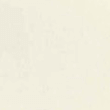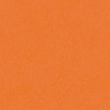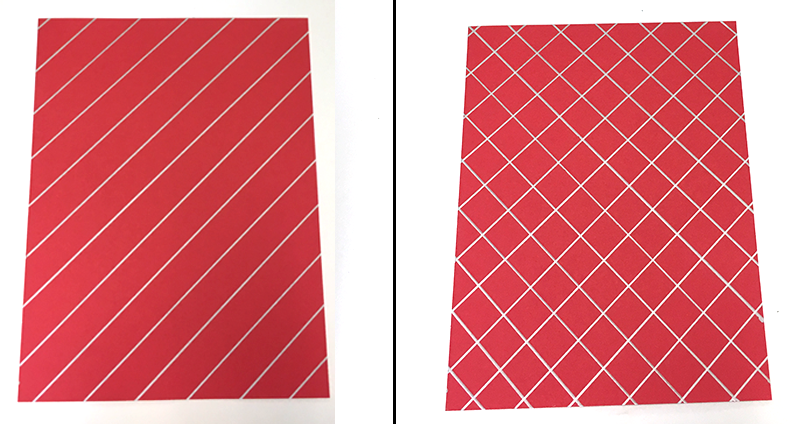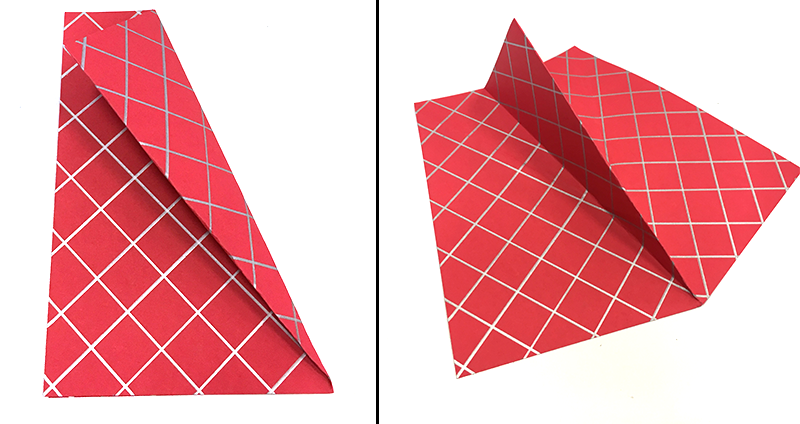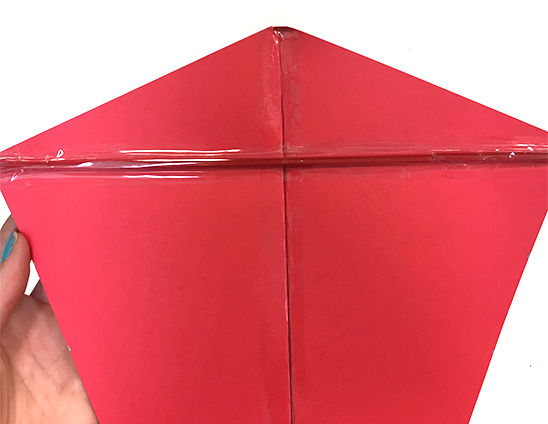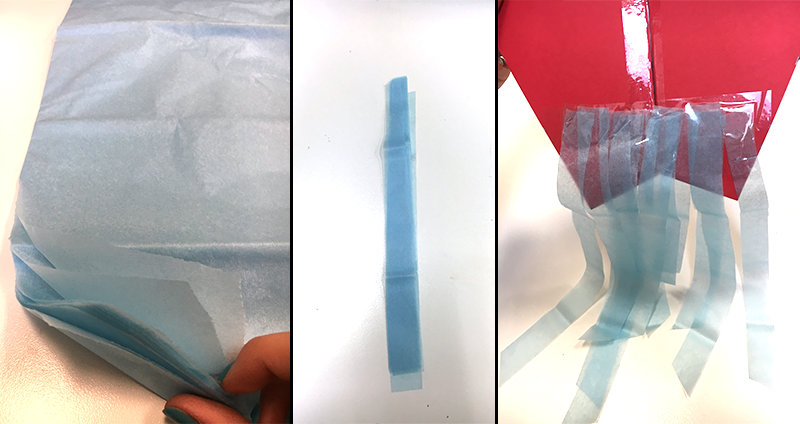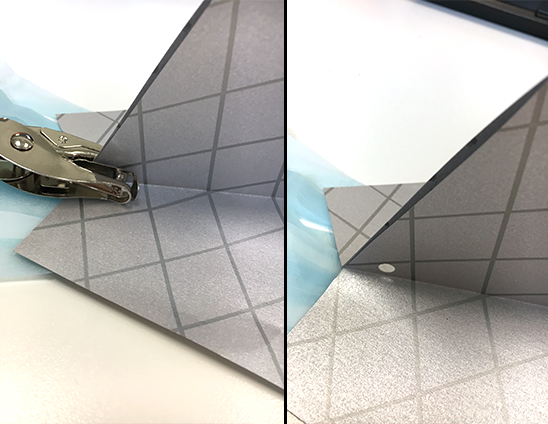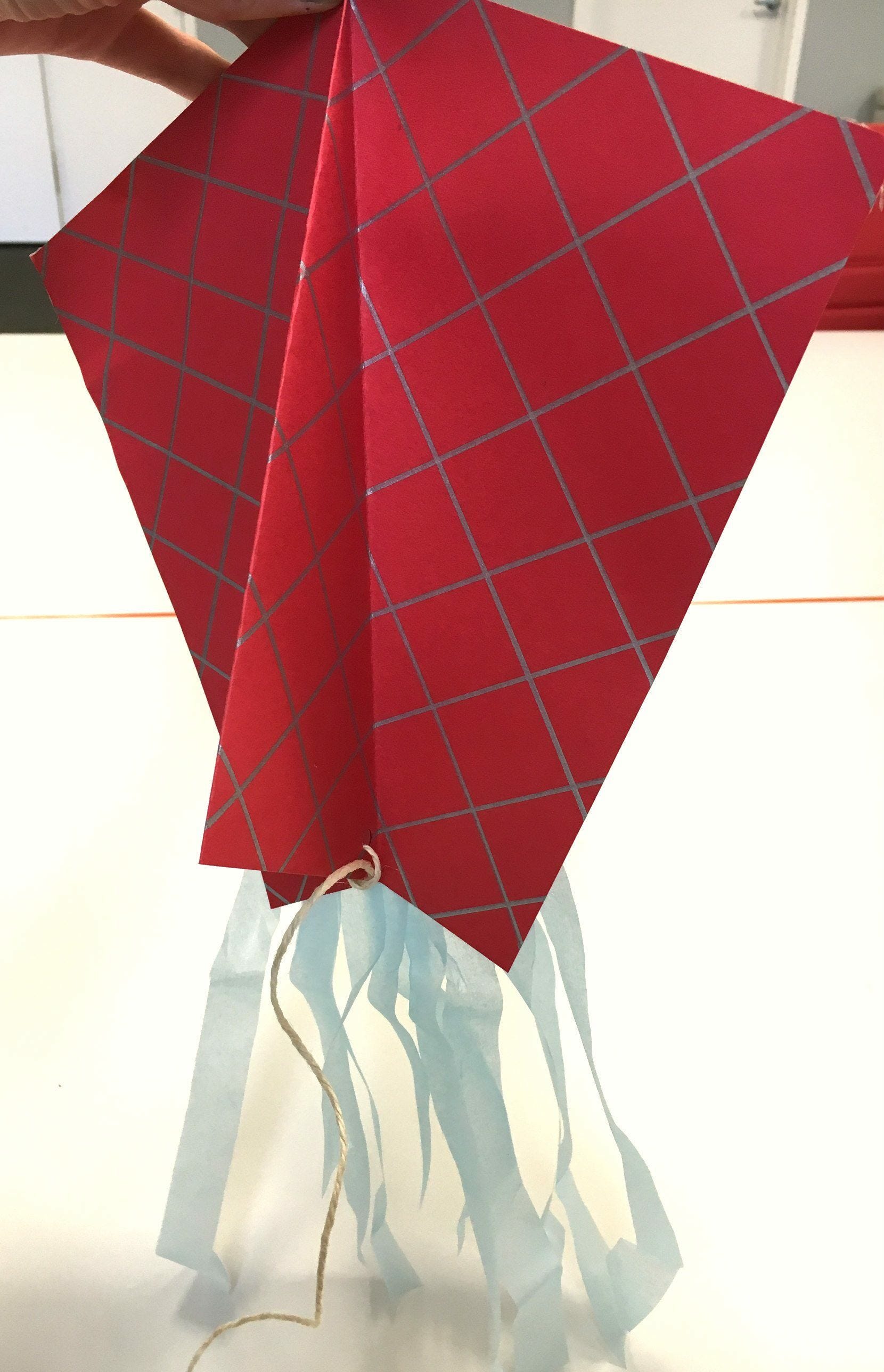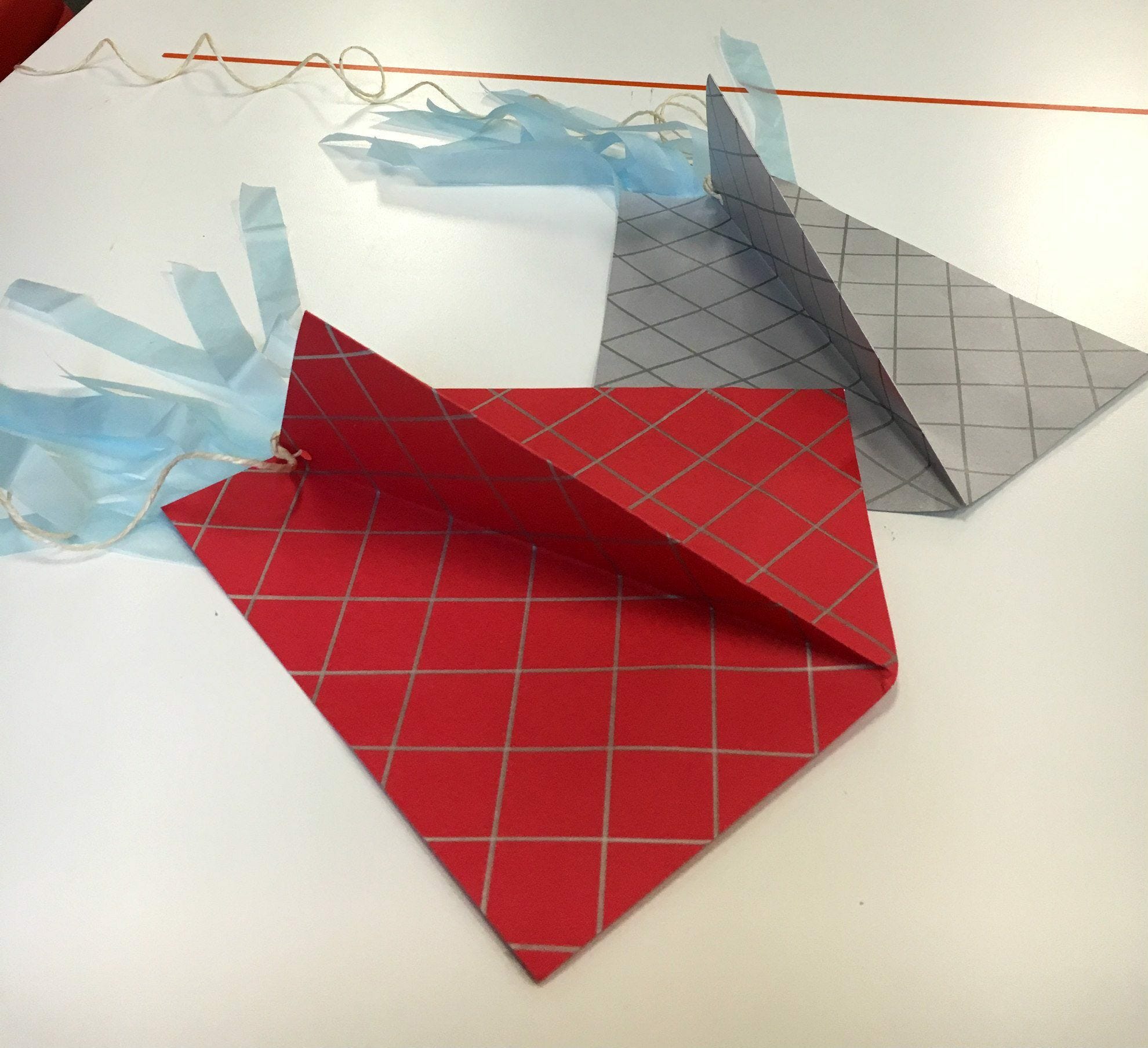DIY Paper Kites
- By Andrew Jacobs
- Jul 19, 2016
Thinking back to my childhood, summers mainly consisted of playing outside with my friends, swimming, eating ice cream & flying kites on the beach. One of the best feelings as a kid was after constant trial and error, looking back during a run & finally seeing your kite soaring through the air!! Here are some some simple steps on how to make your own "DIY" paper kite- reminisce on childhood memories in addition to creating some new ones!
Requirements:
- 1 pack of JAM Red Paper
- 1 pack of JAM Silver Paper
- 1 Silver Metallic Sharpie
- 1 pack of JAM Baby Blue Tissue Paper
- 1 Standard Single Hole Punch
- JAM Ivory Twine
- Coffee stirrer
- Ruler
- Pencil
- Tape
Now Let's Get Started...
Take a sheet of red paper and a ruler, place the ruler diagonally from corner to corner on the paper. Make a mark at every inch with a pencil- this is where your lines and the basis of your pattern is going to be.
Draw lines across the paper where the marks are, with your metallic sharpie. Do the same on the opposite side of the paper to give it that "criss cross" effect.
Fold your paper in half, horizontally.
Fold the top right corner in towards the other side of the paper (shown in the image on left). Fold that flap onto both sides of the paper and there is the shape of your kite (shown in the image on the right).
Place tape down the center of the kite to meld both sides together. Tape a coffee stirrer on horizontally to give your kite some support.
Using your JAM Baby Blue Tissue Paper cut pieces for the tail of your kite. Tape the pieces of the tail on to the bottom of your kite.
Finally, hole punch the tail end of your kite. This is where you are going to tie your twine in to the kite!
And there you have it! DIY Paper Kites that are simple and fun to make- and they really do fly, I promise!!
Creating Your Own DIY Paper Kite
DIY paper kites are a fun and creative way to spend time outdoors with your family or friends. Making your own kite allows you to personalize it with unique designs and colors, and it's a great way to teach kids about aerodynamics and the science of flight. With just a few simple materials like paper, string, and glue, you can create a beautiful and functional kite that will provide hours of entertainment. Whether you're an experienced crafter or just looking for a new hobby, making DIY paper kites is a rewarding and enjoyable activity that anyone can try.
The Benefits of DIY Paper Kites
One of the main benefits of making your own paper kite is the sense of accomplishment and pride that comes with creating something from scratch. DIY paper kites are also a cost-effective alternative to buying pre-made kites, and they can be customized to suit your personal style and preferences. Additionally, making and flying a DIY paper kite is a great way to spend time outdoors and enjoy the fresh air and sunshine. It's a fun and wholesome activity that can be enjoyed by people of all ages, and it's a great way to bond with family and friends.
Use Cases for DIY Paper Kites
DIY paper kites can be used in a variety of settings, from a day at the park to a beach vacation. They're perfect for outdoor gatherings, picnics, and parties, and they can provide hours of entertainment for kids and adults alike. DIY paper kites are also a popular choice for school projects and science experiments, as they provide a hands-on way to learn about the principles of flight and aerodynamics. Whether you're looking for a fun weekend activity or a unique way to decorate your outdoor space, DIY paper kites are a versatile and enjoyable option.
Alternatives to DIY Paper Kites
If you're interested in making your own kite but want to explore alternative materials, there are plenty of options to consider. For example, you could try making a kite out of fabric, plastic, or even recycled materials like plastic bags or newspaper. Each material has its own unique properties and benefits, so it's worth experimenting with different options to find the best fit for your needs and preferences. Additionally, there are many different styles and designs of kites to explore, from traditional diamond kites to more modern and innovative shapes.
Tips for Making and Flying DIY Paper Kites
When making a DIY paper kite, it's important to choose lightweight and durable materials that will withstand the wind and weather. Consider using materials like tissue paper, thin cardboard, or lightweight fabric for the kite itself, and strong string or fishing line for the flying line. Additionally, it's important to consider the weather conditions when flying your kite, as strong winds or rain can damage the kite and make it difficult to control. Finally, have fun experimenting with different designs, colors, and shapes to create a unique and eye-catching kite that will stand out in the sky.
Enjoying the Outdoors with DIY Paper Kites
Whether you're a seasoned kite enthusiast or a beginner looking for a new hobby, making and flying DIY paper kites is a fun and rewarding activity that can be enjoyed by people of all ages. It's a great way to spend time outdoors, get some fresh air and exercise, and bond with family and friends. With just a few simple materials and a little creativity, you can create a beautiful and functional kite that will provide hours of entertainment and enjoyment. So why not give it a try and see where your imagination takes you?


